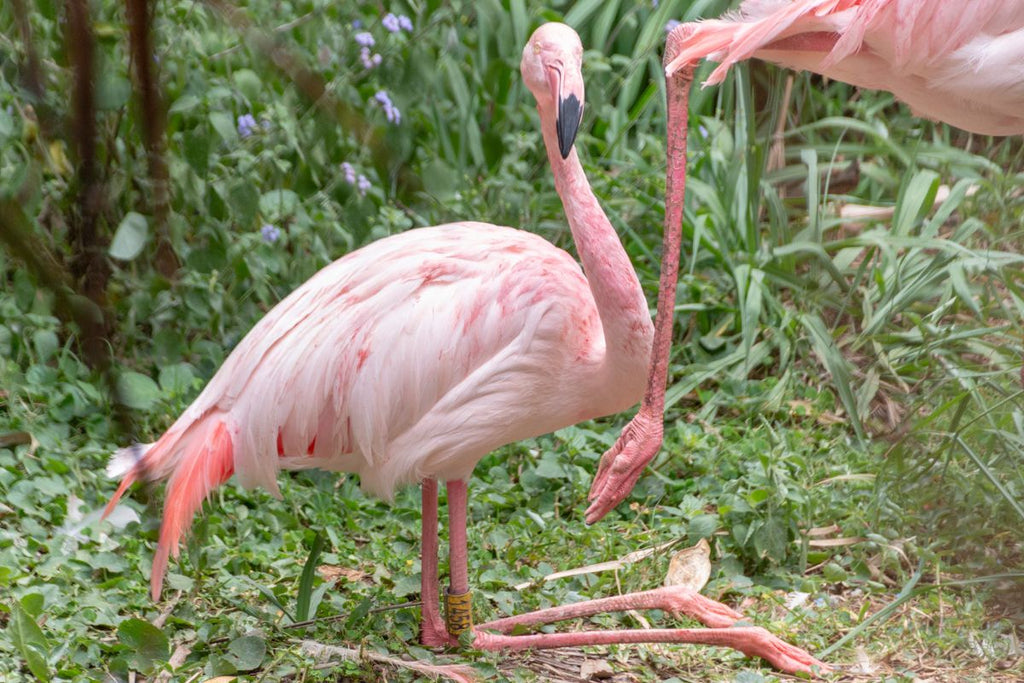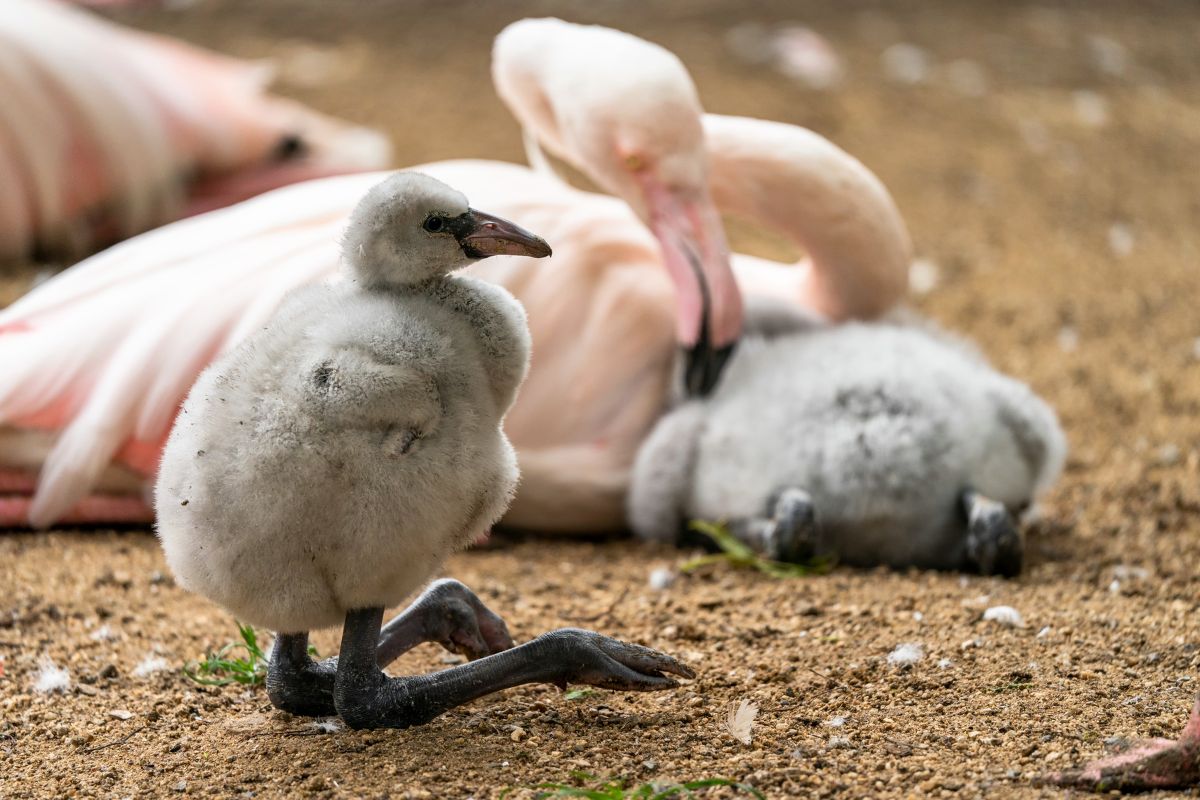How Do Flamingos Sit Down?

Photo by KendalSwart/Shutterstock.com
The one-legged stance is one of the main things flamingos are known for. This unique characteristic is indelible to the animal. It makes no sense to us humans, who find supporting ourselves with one stem to be tiring, not efficient. We would rather drop down on a chair or couch to rest our legs. This got me thinking: do flamingos sit down, and if so, how?
The answer is, yes, flamingos do sit down, but it doesn't look much like when you or I do it. That’s because - and you should sit down before reading this - human and flamingo anatomies differ.
Flamingos Sit Backwards (According to Us)
From our vantage point as humans, how flamingos sit down appears to be backwards and potentially painful. To relax its weary legs, the bird will bend at its ankles - which looks like its knees to the untrained human eye - with the top of its legs straight and its body perched above. Imagine if you were to kneel down, but your knees bent forwards rather than backwards. That is effectively how flamingos sit.
It's a strange sight to see. To sit down, a flamingo will slowly lean backwards, letting gravity pull its butt to the ground. It will then plop down onto the earth, resting on a 90-degree angle and removing the burden from its legs and feet.
You can now stop envisioning your knees bending the wrong direction. No ACLs were harmed in the making of this article. Keep doing what you’ve been doing. Don’t let flamingos fool you into doing something drastic.
The Anatomy of Flamingo Sitting
As alluded to earlier, humans and flamingos have quite different structures. Human phalanges are small relative to the rest of our bodies. You may know them as your toes. Flamingos and other species of birds, like the emu, have bigger phalanges relative to their bodies. You may think of them as their feet. Human tarsals and metatarsals make up the rest of our feet, but for flamingos, their tarsals and metatarsals are what you might think of as their calves. Perhaps you can already see the dichotomy.
This is why when a flamingo sits down, it is sitting on its ankles. The joint the bird rests on is attached to its tibia and other tarsals. That is the equivalent of where our feet end and our legs begin. What would be considered a flamingo’s knee is much higher up in the leg and generally hidden under feathers.
So, Do Flamingos Truly Sit Down?
Technically, when flamingos plop down like this, they are in the same position we are when we are standing up. When flamingos are upright, they are propped up on their toes, at least from the human perspective. So, if flamingos “sit” on their ankles, do they truly sit down at all?
I would say yes. They might not sit the same as us or other animals, but is sitting more about anatomy or the purpose it serves? When a flamingo leans back and lets its phalanges have a break, its goal is the same as when we zero in on a comfortable couch or chair to take a load off of our feet. Even if the mechanics don’t perfectly align, the same intent is clearly there.

Photo by Ondrej_Novotny_92/Shutterstock.com
Maybe that’s not enough for you, and you have an argument. If you are a stickler for by-the-book definitions, then flamingos don’t sit. But if you are willing to broaden your horizons and view the act of relaxation in a more abstract way, then you may come to find that flamingos have been sitting this whole time.




























